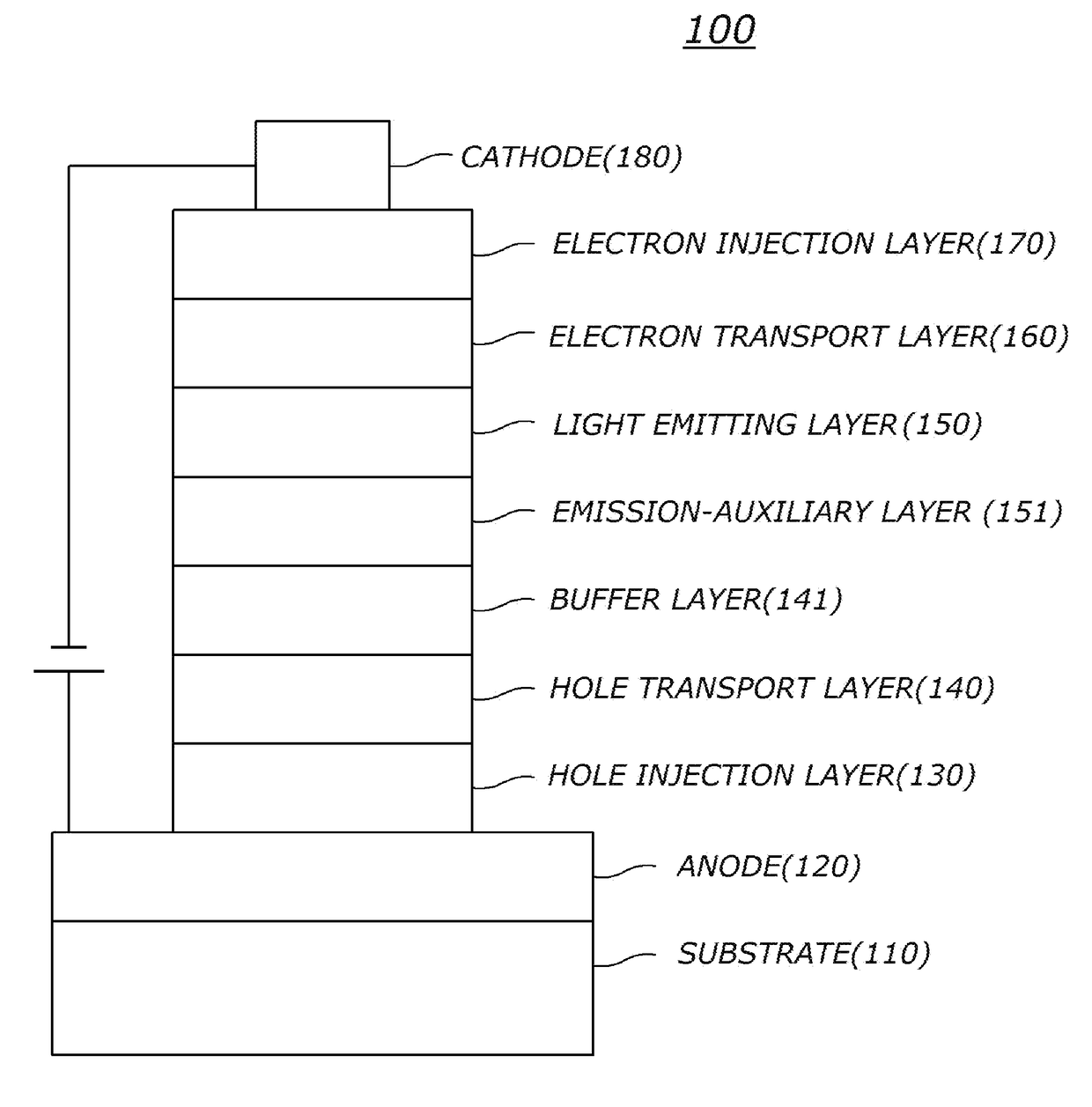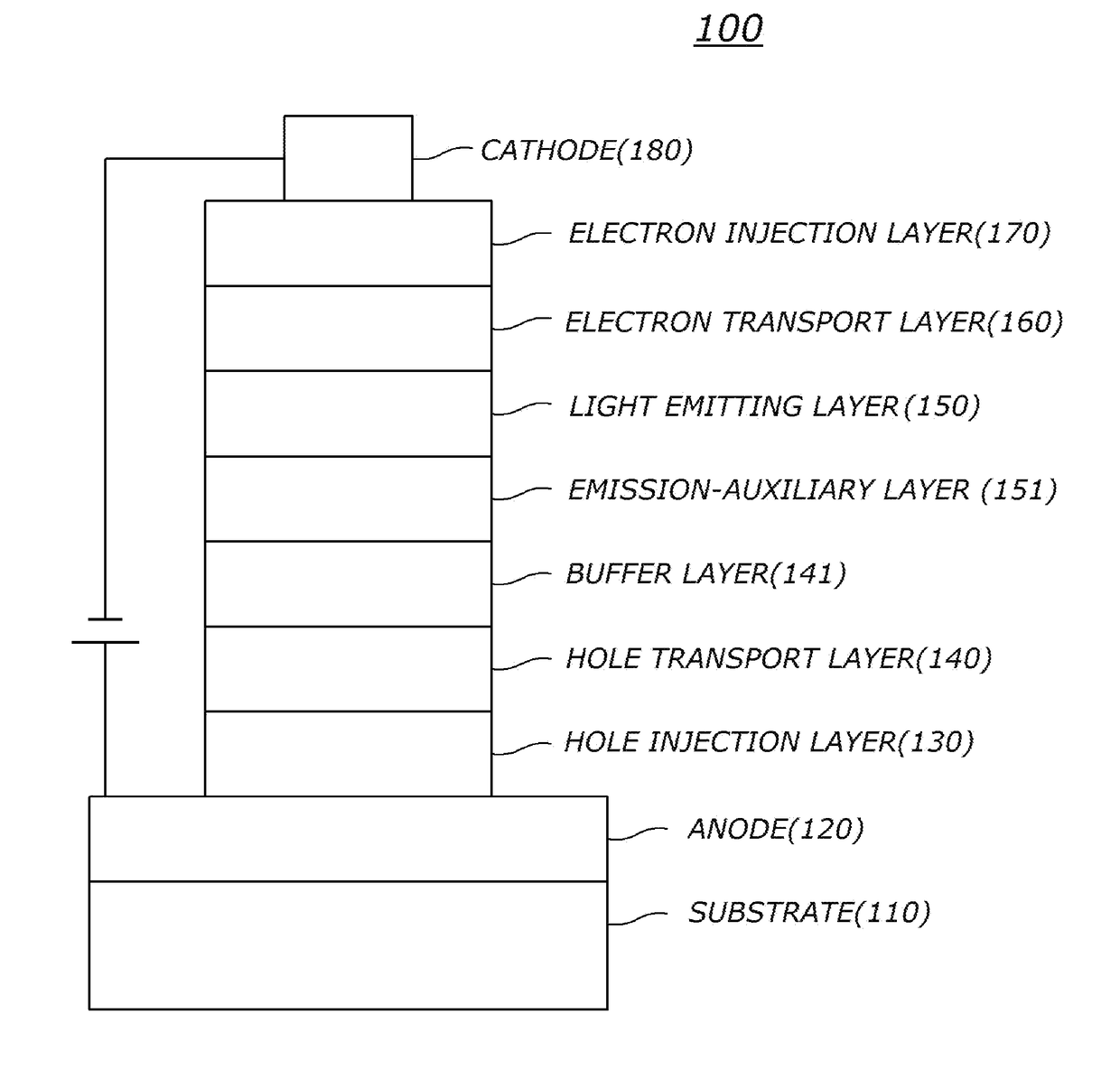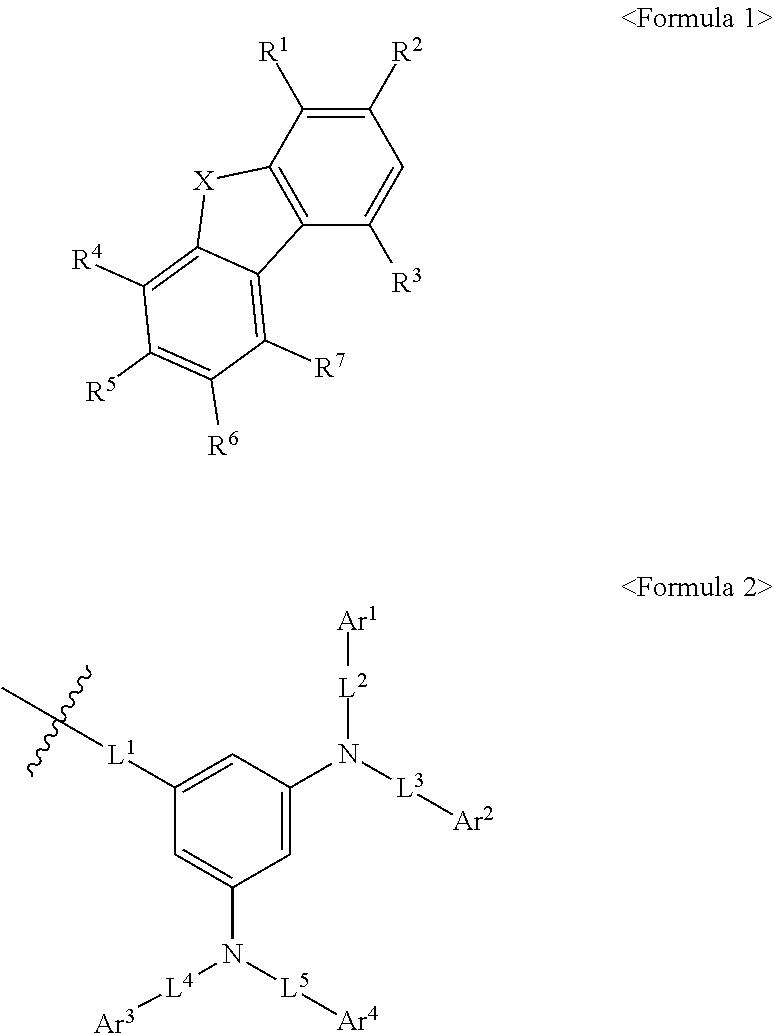Compound for organic electric element, organic electric element comprising the same and electronic device thereof
a technology of organic electric elements and organic electric elements, which is applied in the direction of luminescent compositions, organic chemistry, chemistry apparatus and processes, etc., can solve the problems of power consumption, efficiency and life span problems, and the need for power consumption to increase, so as to reduce the driving voltage of organic electric elements and facilitate the charge balance
- Summary
- Abstract
- Description
- Claims
- Application Information
AI Technical Summary
Benefits of technology
Problems solved by technology
Method used
Image
Examples
synthesis example
[0086]The compound (final products) represented by Formula 1 according to the present invention are synthesized by reacting Sub 1 and Sub 2 as shown in Reaction Scheme 1, but are not limited thereto.
[0087]X, R1 to R7, Ar1 to Ar4, and L1 to L5 are the same as defined in the Formula 1 and the Formula 2. A, B, and Z are each independently selected from R1 to R3, they may be different each other.
I. Synthesis of Sub 1
[0088]Sub 1 of the Reaction Scheme 1 can be synthesized according to, but not limited to, the following Reaction Schemes 2 to 5.
[0089]Synthesis Examples of compounds comprised in Sub 1 are as follows.
1. Synthesis Examples of Sub 1-1
[0090]
(1) Synthesis of Sub 14-1
[0091]3-bromo-[1,1′-biphenyl]-2-ol (32.42 g, 130.15 mmol) as a starting material, Pd(OAc)2 (2.92 g, 13.01 mmol), and 3-nitropyridine (1.62 g, 13.01 mmol) were added into a round bottom flask, then, dissolved in C6F6 (195 ml), DMI (130 ml). After adding tert-butyl peroxybenzoate (50.56 g, 260.30 mmol), stirring at 90 ...
example i-1
[Example I-1] Green OLED (a Hole Transport Layer)
[0190]Organic light emitting diodes (OLEDs) were fabricated according to a conventional method by using a compound of the present invention as a hole transport layer material.
[0191]First, an ITO layer (anode) was formed on a glass substrate, and then 4,4′,4″-tris[2-naphthyl(phenyl)amino]triphenylamine (hereinafter, “2-TNATA”) was vacuum-deposited on the ITO layer to form a hole injection layer with a thickness of 60 nm.
[0192]Subsequently, compound P-1 of the present invention was vacuum-deposited with a thickness of 60 nm on the hole injection layer to form a hole transport layer.
[0193]Subsequently, a light emitting layer with a thickness of 30 nm was formed on the hole transport layer by using 4,4′-N,N′-dicarbazole-biphenyl (hereinafter, “CBP”) as a host material and tris(2-phenylpyridine)-iridium (hereinafter, “Ir(ppy)3)”) as a dopant material in a weight ratio of 90:10.
[0194]Next, ((1,1′-bisphenyl)-4-olato)bis(2-methyl-8-quinolinol...
example i-2
[Example I-2] to [Example I-58] Green OLED (a Hole Transport Layer)
[0196]The OLEDs were fabricated in the same manner as described in Example I-1 except that the compounds P-2 to P-96 of the present invention described in Table 4 instead of the compound P-1 of the present invention were used as the hole transport layer material.
[Comparative Example I-1] to [Comparative Example I-5]
[0197]The OLEDs were fabricated in the same manner as described in Example 1 except that the following Comparative Compounds 1 to 5 described in Table 4 instead of the compound P-1 of the present invention were each used as the hole transport layer material.
[0198]Electroluminescence (EL) characteristics were measured with a PR-650 (Photoresearch) by applying a forward bias DC voltage to the OLEDs prepared in Examples I-1 to I-58 of the present invention and Comparative Examples I-1 to I-5. And, the T95 life time was measured using a life time measuring apparatus manufactured by Macscience Inc. at reference...
PUM
| Property | Measurement | Unit |
|---|---|---|
| thickness | aaaaa | aaaaa |
| thickness | aaaaa | aaaaa |
| thickness | aaaaa | aaaaa |
Abstract
Description
Claims
Application Information
 Login to View More
Login to View More - R&D
- Intellectual Property
- Life Sciences
- Materials
- Tech Scout
- Unparalleled Data Quality
- Higher Quality Content
- 60% Fewer Hallucinations
Browse by: Latest US Patents, China's latest patents, Technical Efficacy Thesaurus, Application Domain, Technology Topic, Popular Technical Reports.
© 2025 PatSnap. All rights reserved.Legal|Privacy policy|Modern Slavery Act Transparency Statement|Sitemap|About US| Contact US: help@patsnap.com



